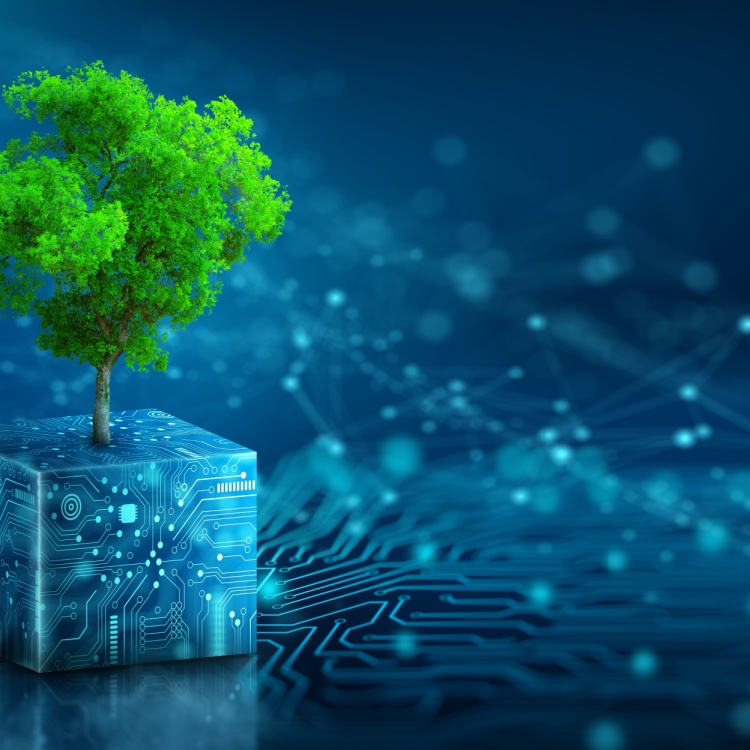Our Digital World: Impact, Advancements, and Forecasts

More than two-thirds of the global population use mobile phones—that’s 5.11 billion people. Every second, 11 new users venture into the Internet, joining 4.39 billion others. The average user spends 2 hours and 16 minutes a day on social media platforms. Filipinos scroll down those feeds more than anybody else, clocking in at 4 hours and 12 minutes every day.
Smartphones make up two-thirds of global mobile connections, with around 5.5 billion smartphone users cultivating a booming mobile app market. The average Internet user spends 6 hours and 42 minutes online every day, and for almost half the time that people surf online, they’re using their mobile phones.
These 2019 statistics on digital users, taken from Digital 2019 reports* from social media management platform Hootsuite and social media advertising agency We Are Social, are proof positive of our thriving, expanding, and dynamic digital world. From e-commerce purchases to bank transactions, traffic navigation to podcasts, streaming movies and music to a Google search on a city’s best restaurants, innovations in telecommunications and digital technology have transformed the way we go about our lives.
*https://wearesocial.com/global-digital-report-2019
And they will continue to do so. As we enter a new decade, what does our digital future hold?
5G: The Next-Gen Network
It’s described by the European Commission** as “one of the most critical building blocks of our digital economy and society in the next decade.” Poised to dramatically increase the bandwidth, capacity, and reliability of cellular broadband, it promises vastly faster download and upload speeds, as well as low latency (the time it takes devices to communicate with wireless networks). From smart cities and self-driving cars to energy management and telemedicine, 5G has the potential to change and improve so many industries.
**https://ec.europa.eu/digital-single-market/en/towards-5g
According to futurist and strategic adviser Bernard Marr***, 5G will transform telecoms into both technology distributors and service providers. “This shift will require telecoms to engage with governments, enterprise customers and alter their sales approach to help customers leverage the power of 5G,” says Marr.
In its 2020 telecom industry outlook****, Deloitte vice-chairman and US telecommunications, media, and entertainment leader Kevin Westcott says that 5G is “very much in the ‘build’ phase right now…it is expected to generate a windfall for network, infrastructure, and equipment vendors.” In 2020, worldwide 5G wireless network infrastructure revenue*****, is estimated to reach $4.2 billion, an 89% increase from 2019.
*****https://www.gartner.com/smarterwithgartner/5-digital-technology-trends-for-2020/
The Internet of Things (IoT): Connecting Our Digital and Physical Worlds
Global research and advisory firm Gartner****** predicts that the enterprise and automotive IoT market will grow to 5.8 billion endpoints in 2020, a 21% increase from 2019. Utilities will be the highest user of IoT endpoints, followed by physical security, with building intruder detection and indoor surveillance use driving volume. Building automation will have the largest growth rate in 2020 (42%), followed by automotive (31%) and healthcare (29%).
Revenue from endpoint electronics is estimated to total $389 billion globally, with North America, Greater China, and Western Europe representing 75% of total revenue. Consumer connected vehicles and networkable printing and photocopying will produce the most endpoint electronics revenue, totaling $72 billion and $38 billion, respectively.
Edge Computing: Gaining the Edge
With the digitization of enterprises and the increase in connected machines, cloud computing will not be fast enough for optimized real-time performance. “In order to monitor, analyze, and optimize connected IoT applications, enterprises will need computing power done near the edge,"******* says Kiva Allgood, Head of IoT at Ericsson.
For telecommunications service providers building 5G networks, this is a tremendous growth opportunity. With the rollout of 5G and the increase in IoT devices, edge computing may experience considerable growth. “International Data Corporation predicts that in three years, 45 percent of IoT-generated data will be stored, processed, analyzed, and acted upon close to or at the edge of networks,” says Westcott of Deloitte. “By enabling data aggregation and processing at the edge, companies can achieve bandwidth savings while also reducing latency and improving reliability.”
Cybersecurity: Greater Risks
With these technological advancements come greater risks. As the number of connected devices grows and the amount of data transmitted increases, it becomes even more important to prioritize data privacy and security.
In a report******** by the National Institute of Standards and Technology (NIST) of the United States Department of Commerce, it identified three risk considerations for IoT devices. One, many IoT devices can make changes to physical systems and thus have an impact on the physical world. Two, since many cannot be accessed, managed, or monitored in the same ways conventional IT devices can, staff knowledge and tools must be expanded, and risks with manufacturers and other third parties having remote access or control over these IoT devices must be addressed. Finally, cybersecurity and privacy measures for IoT devices are different from conventional IT devices, requiring additional controls for mitigating risk.
********https://nvlpubs.nist.gov/nistpubs/ir/2019/NIST.IR.8228.pdf
The reach of the telecommunications industry in today’s digital world is deep, wide, and filled with vast amounts of sensitive data, making it a valuable target for cybercriminals.
“Consequently, telecommunications firms should work hard to create digital environments where people feel safe—and where brands are comfortable advertising,” says Westcott. “This is especially true in the area of social media, where several platforms are now using artificial intelligence solutions in conjunction with experts to weed out spam and other offensive content.”
As technological advancements continue to drive digital transformation, citizens of the digital world are given ways to live better, safer, richer lives. For those at the helm of the tech industry, this potential should be tempered by a strong sense of responsibility and ethics. For while it may be a business that deals with ones and zeros, it’s also an enterprise that impacts our collective future.
Other Blog




